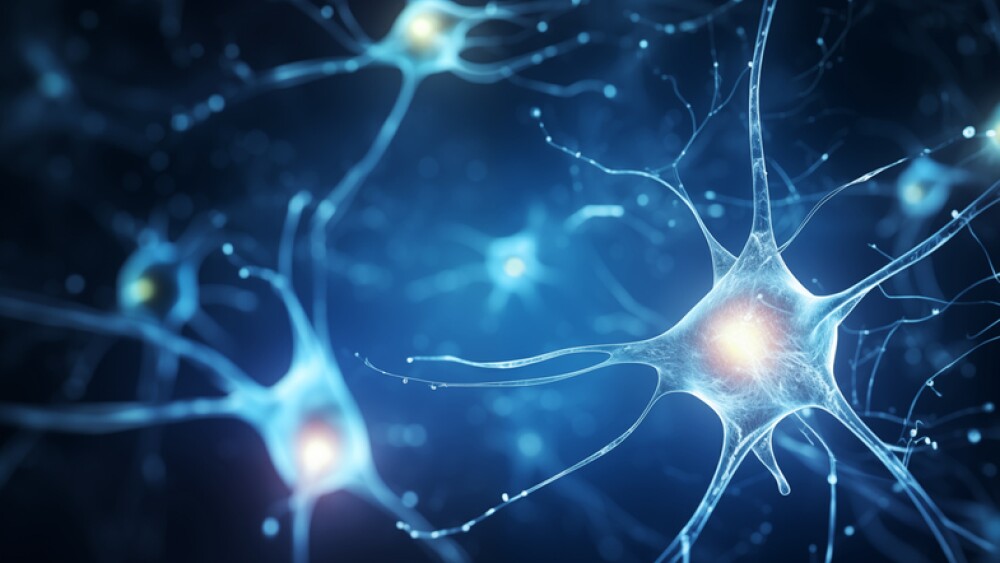It is not uncommon for children and teens with autism spectrum disorder to struggle with sleep.
MINNEAPOLIS, Feb. 13, 2020 /PRNewswire/ -- It is not uncommon for children and teens with autism spectrum disorder to struggle with sleep. Trouble falling asleep and staying asleep or refusing to go to bed are just some of the sleep problems they can experience. To help families, neurologists and other healthcare providers make decisions on the best treatments, the American Academy of Neurology (AAN) has issued a new guideline for sleep problems in children and teens with autism, published in the February 12, 2020, online issue of Neurology®, the medical journal of the American Academy of Neurology.
The guideline is endorsed by the American Academy of Sleep Medicine, Autism Speaks, the Child Neurology Society and the Society for Developmental and Behavioral Pediatrics. The American Epilepsy Society has affirmed the value of the guideline to epileptologists.
"While up to 40 percent of children and teens in the general population will have sleep problems at some point during their childhood, such problems usually lessen with age," said lead guideline author Ashura Williams Buckley, MD, of the National Institute of Mental Health in Bethesda, Md., and a member of the American Academy of Neurology. "For children and teens with autism, sleep problems are more common and more likely to persist, resulting in poor health and poor quality of life. Some sleep problems may be directly related to autism, but others are not. Regardless, autism symptoms may make sleep problems worse."
For the guideline, experts from the American Academy of Neurology carefully reviewed available scientific studies on autism and sleep problems in children and teens.
The guideline addressed four types of sleep problems: refusing to go to bed, stalling, or needing a parent or caregiver present until the child falls asleep; trouble falling asleep and staying asleep; sleeping for only short periods of time or not getting enough total sleep each night; and daytime behavior problems associated with insufficient sleep at night.
The guideline recommends that healthcare providers first identify if the sleep problems are caused by medications or other medical conditions, and if so, that those causes be addressed.
If sleep problems appear to be more behavioral in nature, the guideline recommends a number of behavior treatments that have been shown to be effective in children with autism. These include setting up a consistent sleep routine with regular bedtimes and wake times, choosing a bedtime close to when the child usually gets sleepy, and not allowing use of electronic devices like computers or televisions close to bedtime.
"Behavior-modification strategies are a good place to start because they do not cost anything, there are no side effects and they have been shown to work for some people," said Williams Buckley.
If behavioral strategies alone do not work, the guideline recommends that healthcare providers also consider adding melatonin.
Melatonin is a hormone that tells the brain when to fall asleep and how long to sleep. Studies suggest that the artificial form of melatonin is safe and effective for children and teens with autism in the short term, for a period of up to three months. More research is needed to determine how safe melatonin is over longer periods of time. Possible side effects include headache, dizziness, diarrhea and rash. The guideline also cautions that over the counter melatonin products may not be reliable in terms of how much melatonin they actually contain. The guideline recommends using products that are labeled "pharmaceutical grade" melatonin.
The guideline also found that melatonin use alone may be just as helpful in some patients as when melatonin is combined with behavioral strategies.
The guideline did not find that behavior treatments combined with melatonin changed daytime behavior problems or symptoms of autism.
The guideline also found no evidence that routine use of weighted blankets or specialized mattress technologies improve sleep.
"Sleep problems can make behavioral issues in children and teens with autism even worse," said Williams Buckley. "That's why it is important for parents and caregivers to work with healthcare providers to find a way to improve a child's sleep because we know that good quality sleep can improve overall health and quality of life in all children."
Learn more about autism at BrainandLife.org, home of the American Academy of Neurology's free patient and caregiver magazine focused on the intersection of neurologic disease and brain health. Follow Brain & Life® on Facebook, Twitter and Instagram.
The American Academy of Neurology is the world's largest association of neurologists and neuroscience professionals, with over 36,000 members. The AAN is dedicated to promoting the highest quality patient-centered neurologic care. A neurologist is a doctor with specialized training in diagnosing, treating and managing disorders of the brain and nervous system such as Alzheimer's disease, stroke, migraine, multiple sclerosis, concussion, Parkinson's disease and epilepsy.
For more information about the American Academy of Neurology, visit AAN.com or find us on Facebook, Twitter, Instagram, LinkedIn and YouTube.
![]() View original content:http://www.prnewswire.com/news-releases/sleep-problems-in-children-teens-with-autism-are-focus-of-new-aan-guideline-301004977.html
View original content:http://www.prnewswire.com/news-releases/sleep-problems-in-children-teens-with-autism-are-focus-of-new-aan-guideline-301004977.html
SOURCE American Academy of Neurology




